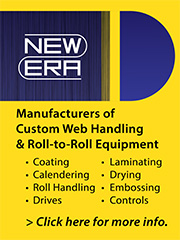A Surge in Demand for Antimicrobial Protection
- Published: June 28, 2021
By Darrell Taylor, EMEA Key Account Manager, Microban® International, and Jonathan Francis, Product Manager, MacDermid Enthone Industrial Solutions
 The new normal
The new normal
The COVID-19 pandemic has touched all our lives in ways we could never imagine. We are all now more acutely aware of the role that microorganisms play and how easy it is to unwittingly transfer them between surfaces. Simple, routine actions – such as the touch of a button, using a card reader or operating a treadmill – warrant more concern than perhaps they did before. Collectively, our hands are the ‘surfaces’ that are exposed to the greatest burden of foreign bacteria and, for that reason, they are the best at cross-contaminating microorganisms from one place to another. The saying often goes that ‘many hands make light work’ but, when protecting surfaces from microbes, interacting with more hands simply means more cleaning. Therefore, as we emerge from this pandemic, industries are crying out for an easy, comprehensive strategy to reassure consumers that high-touch screens are clean and protected from mucky hands.
The digital era
Long before the pandemic hit, there was a shift in industries such as the hospitality and food sectors towards using smart technology – including contactless payments and self-service kiosks – for more efficient check-out. Embracing digitalization can also offer faceless transactions which, arguably, may have inadvertently equipped industries to emerge from this pandemic sooner. These screens and touchpoints are frequently covered with hard-coated films but, even with this added protective layer, consumers and operators alike know that it is often impractical to expect them to be continually sprayed and wiped between every contact. Unfortunately, traditional disinfectants can only offer limited residual activity against microbes once sprayed onto a surface, making them a ‘one-hit wonder’, and allowing microbial communities to bounce back after a single touch. Consequently, even regular disinfection only goes a little way to relieving user concerns regarding the cross-contamination of microbes. In addition, harsh cleaning formulas, the activity of damaging bacteria and regular wear-and-tear can lead to early product degradation, which many associate with a disregard for appearance and sanitation. In this microbe-conscious world, the ability to reassure users of cleanliness and care has never been more important.
To combat this, some manufacturers are protecting screens and touchpoints with antimicrobial-treated hard-coated films for enhanced surface cleanliness and defense against product-damaging microbes. Built-in antimicrobial technology, such as zinc pyrithione, lives within the chemistry of films so is always active to continually prevent the growth of microbes between cleans, even in those hard-to-reach places. Reducing the bioburden of potentially degrading or odor-causing bacteria on a high-touch surface can help to extend the lifetime of the film, even after frequent use, to keep that fresh product feeling for longer and alleviate user concerns.
Uncompromising integrity
Built-in antimicrobial technology has the power to provide a cleaning strategy that complements regular disinfection practices in all manners of industries, including gyms, hospitality, offices, and healthcare, and reassures users where it matters most. However, the formulation of films is a fine-tuned process and incorporating a new technology into an existing product line is never an easy feat or without its challenges. Film manufacturers need to know that this technology can be added without compromising key product features such as the durability of surfaces, the clarity, glide and smoothness of screens, and the desired finish. Crucially, the chosen antimicrobial additive must complement the structural integrity of the film without adding to the thickness, and must avoid wearing away, even after excessive use or chemical abrasion from contact with harsh cleaning chemicals, hand cream, sweat, foodstuffs and much more.
A meeting of minds
Partnering with a leading antimicrobial additive company can help manufacturers find a solution – or multiple solutions – to reflect the demands for film applications in today’s technological world. Scientists can offer an intricate understanding of antimicrobial technologies that perfectly complements the materials know-how of film manufacturers, finding the perfect balance of minds and chemistries. Trusted experts should not only ensure that any technology added does not hamper the quality of the films, but should also certify that the chosen chemistries meet regulations and do not compromise antimicrobial efficacy. As we introduce more and more of these user-machine interfaces into our lives, we should also guarantee – beyond doubt – that the chosen antimicrobial technology is safe, for production and use, with stringent testing.
Thus far, antimicrobial polycarbonate films have successfully been developed by adding zinc-based technology – with proven efficacy and safety – to the lacquer mixture during production, coating the film in lasting protection and uniformly embedding the additive into the hard-coat. This technology disrupts normal microbial function to prevent the growth of microorganisms, and has been applied as a complementary strategy to cleaning in healthcare facilities and gyms. The potential for antimicrobial technology on high-touch surfaces is expected to reach beyond this as we see seismic shifts in consumer awareness, providing an additional level of surface cleanliness and reassurance when operating user-machine interfaces.
Due to regulatory differences, the information referenced in this article may not be valid in all countries or regions. In some cases, legal regulations may restrict or prohibit the selection of available Microban® technologies, the field of application for which they are approved, and/or the permissible marketing claims for treated articles. Microban technology is not designed to protect users or others against disease-causing microorganisms, and is not a substitute for normal cleaning practices.







